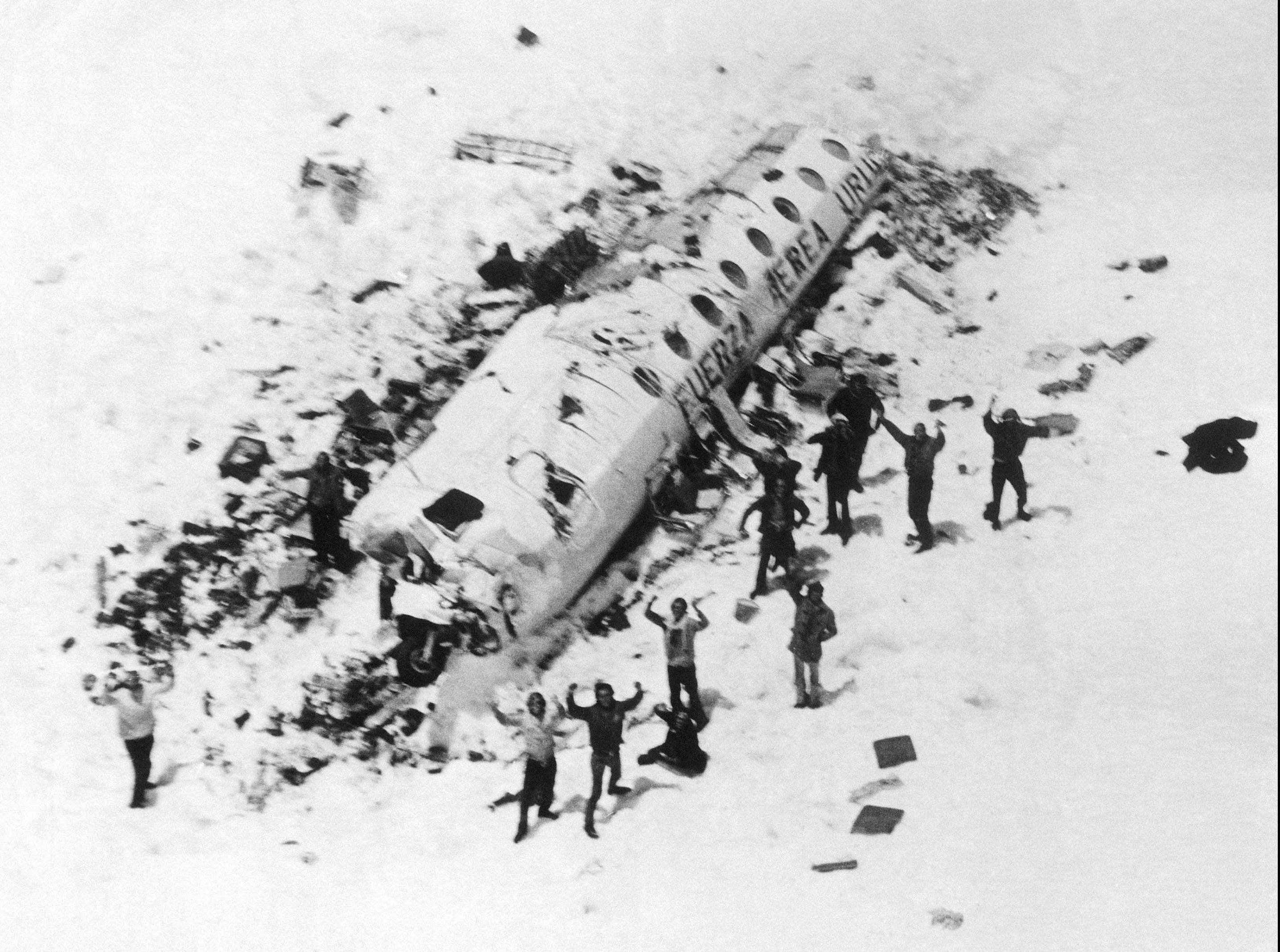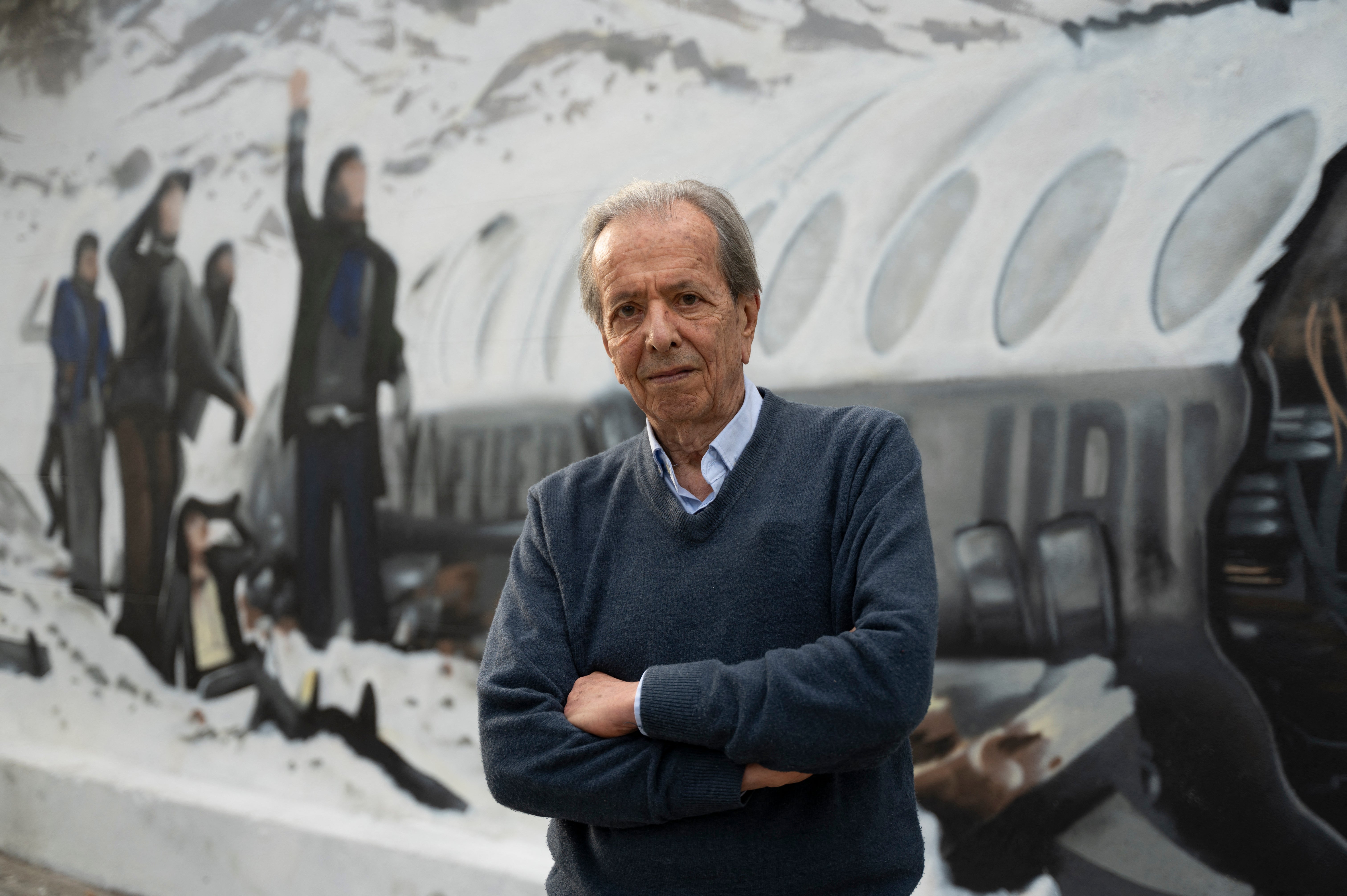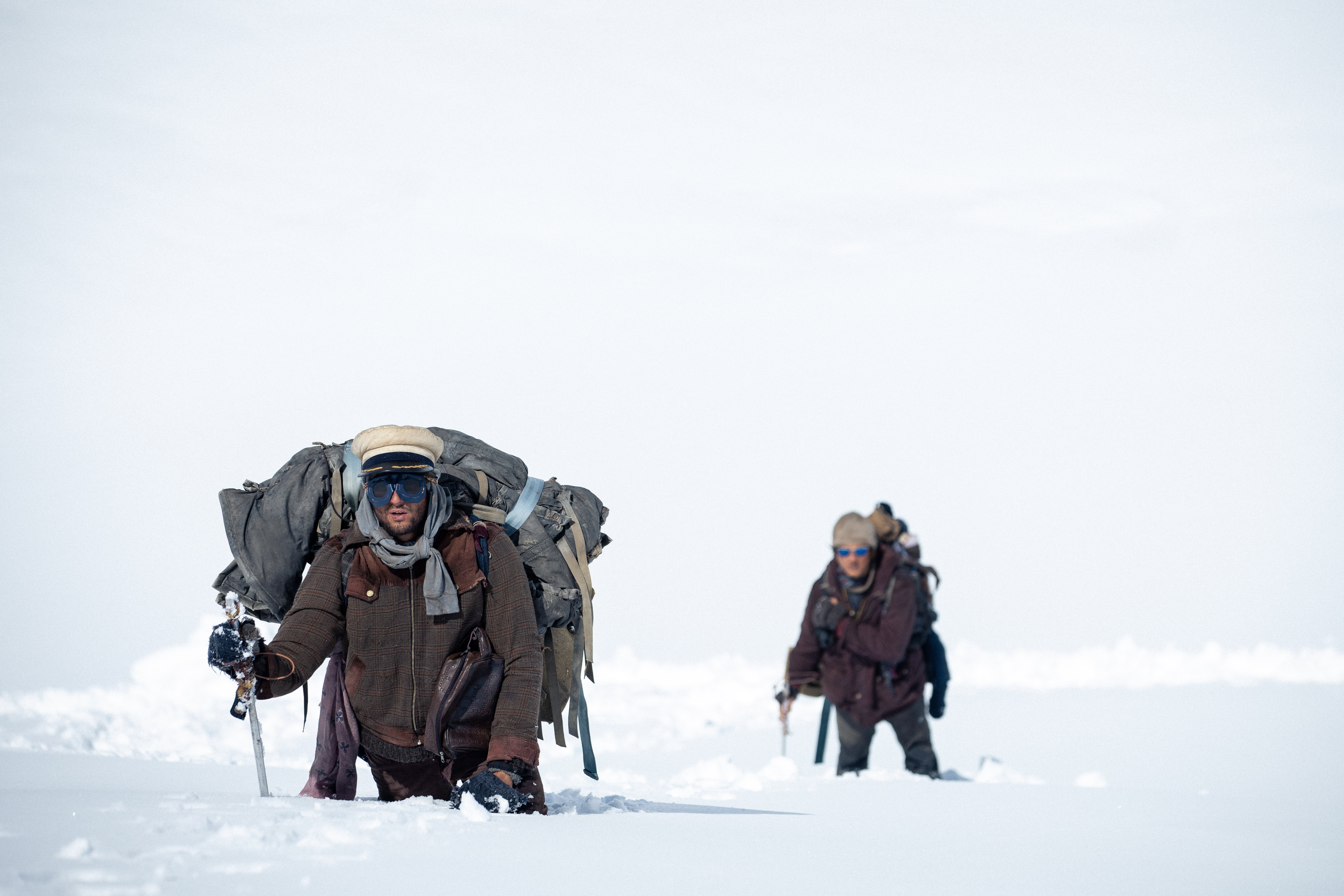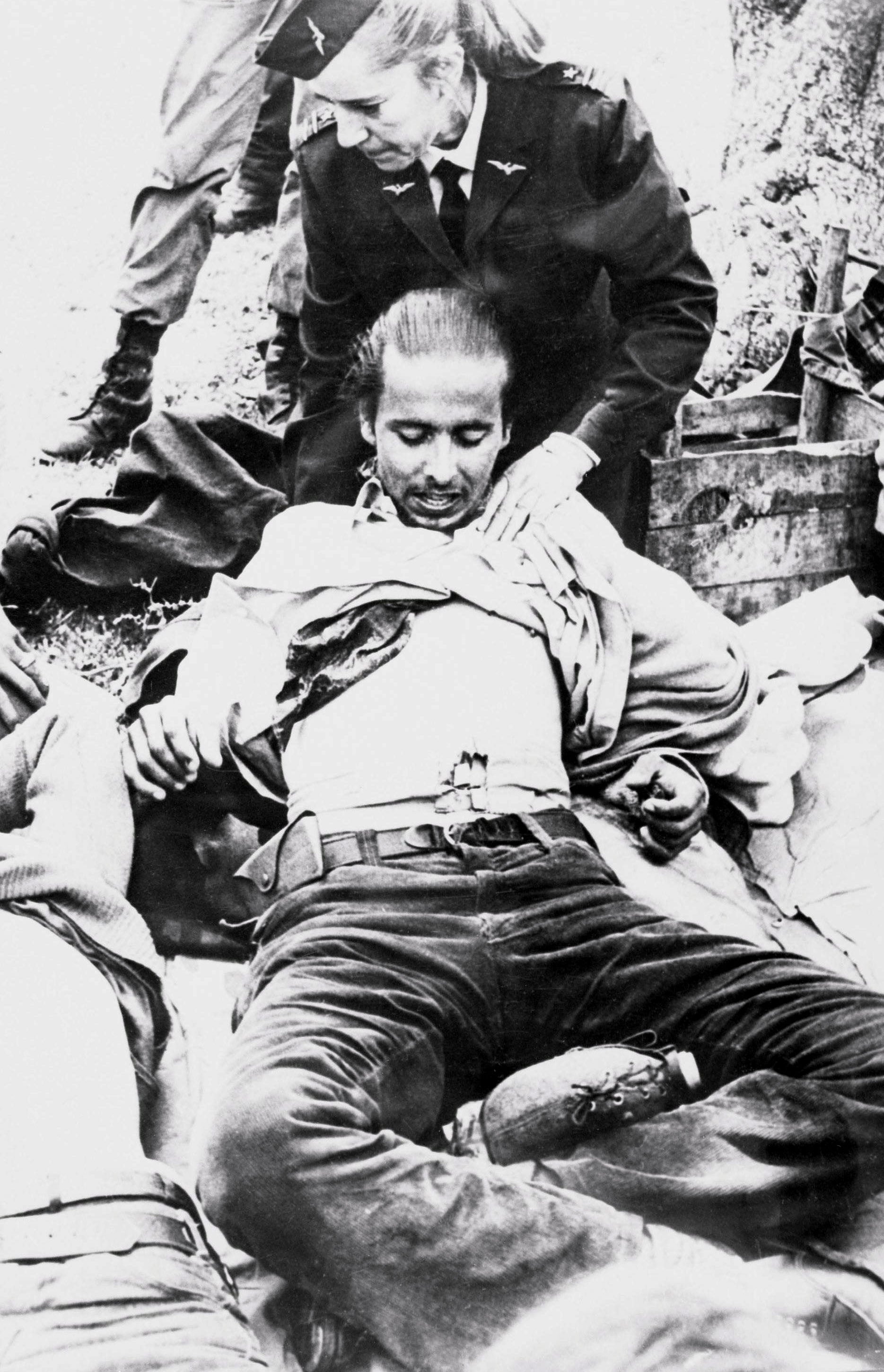Society of the Snow: the horrific true story of the Andes disaster that shocked the world

Get our free weekly email for all the latest cinematic news from our film critic Clarisse Loughrey
Get our The Life Cinematic email for free
The Andes disaster, or miracle depending on how full your glass is, needs little introduction. The 1972 calamity[1] - in which a plane carrying 45 people, including an amateur rugby team from Uruguay[2], crashed in the South American wilderness - has been the subject of books, documentaries and multiple films, the most famous of which, Alive, starred Ethan Hawke in 1993.Now, it is getting the movie treatment once more courtesy of Spanish filmmaker JA Bayona[3], whose film Society of the Snow premieres on Netflix[4] today. The movie, which is nominated for Best Foreign Language Film at the Golden Globes this weekend and is also Spain's official Oscar entry, is an adaptation of Pablo Vierci's book of the same name. Originally published in 2009, Society of the Snow pulls together accounts of all 16 survivors of the crash - many of whom Vierci knew as children growing up in Montevideo, Uruguay.
Admittedly, the story is one of cinematic proportions: shocking, terrifying, awe-inspiring. The flight was chartered to take the Old Christian Club amateur rugby team from Montevideo to Santiago, Chile for a match. Also on board the plane were family, friends, and one stranger who had purchased a ticket at the last minute so she could attend her daughter's wedding.
Due to a pilot error, the plane crashed in the snowy Andes mountains[5]. The wreckage was not found for more than two months, leaving its survivors to tell their story of sacrifice, friendship, faith, and most salaciously, cannibalism. The first sign of trouble showed itself long before the plane left the tarmac.
The aircraft itself was arguably unfit for purpose. Reflecting on the disaster, one survivor, Nando Parrado, recently told The Guardian[6] that he had been naive to board the plane at all. "A Fairchild FH-227D, very underpowered engines, full of people, completely loaded, flying over the highest mountains in South America, in bad weather," he said. "I mean, no way." It was due to bad weather that the pilots had been forced to touch down early in Mendoza, Argentina, where the crew and passengers stayed overnight.
The aircraft, however, had been leased from the Uruguayan Air Force, meaning that spending more than 24 hours on Argentinian soil would be breaking the law; they took off again the following day at 2.18pm on Friday 13 October. (According to Parrado's account in The Guardian[7], the unlucky symbolism of the date was not lost on the team who had cracked jokes about it.) A direct route to Santiago was out of the question. The Fairchild was not built to fly higher than 6,858 metres, and Aconcagua, the tallest mountain in the Andes, is 6,962 metres - and so instead the pilots plotted a course south and over the Planchos Pass, where the ridges are lower and more manageable.
It was supposed to be a 90-minute journey. Approximately one hour into the flight, the pilot notified air controllers that he was flying over the pass and soon after, that he had reached Curico, Chile (approximately 178km south of Santiago). The pilot had, however, misjudged the plane's position.
In fact, they were still in the Andes. Unaware of his mistake, controllers cleared the pilot to begin the plane's descent. The belly of the plane collided with a ridge; its tail and wings broke off, with the left propeller slicing through the fuselage, which furiously and rapidly sped down the mountain.
Describing the experience, Roberto Canessa, another survivor and medical student at the time, told ABC News[8], "I was thrown with an incredible force, and as I was fainting, I was realising that I was alive, and the plane had stopped." Of the 45 on board, 12 did not survive the initial crash. Others were gravely injured. Parrado described seeing his younger sister Susy[9] lying near the cockpit moments after the crash, "She couldn't talk.
She could only move her eyes. She lost her shoes in the crash and her feet were purple," he said. "Those are the images that I have."

'Society of the Snow' tells the horrifying true story of the 1972 disaster (Sipa/Shutterstock)
The crash itself was terrible beyond imagination, but it was the shared story of survival and sacrifice that followed, which captivated (and scandalised) the public. At an altitude of approximately 3,500 metres in the snowy Andes mountains, the group faced freezing conditions, with temperatures plummeting to -35 C. The fuselage was mostly intact, and the survivors took shelter within it, cobbling together a makeshift wall using suitcases, aircraft fragments and seats.
The wall was only barely effective, though, against the blistering winds and frequent blizzards that raged outside. Parrado told The Guardian[10] that it had been so deathly cold that the boys would punch each other in the arm for circulation and look for heat in one another's breath.

Access unlimited streaming of movies and TV shows with Amazon Prime Video Sign up now for a 30-day free trial
Sign up[11]
Access unlimited streaming of movies and TV shows with Amazon Prime Video
Sign up now for a 30-day free trial
Sign up[12]Even though water was all around in the form of snow, eating it burned their throats and lips. It was only later that they learnt how to melt snow in bottles so that it was warm enough to drink. "One month into the ordeal we were mountain men, and we knew what to do," Parrado said on how they acclimatised to their surroundings. Food was the biggest concern.
The crash had left them with meagre supplies: chocolate, sweets, nuts, crackers, and some alcohol - all of which dwindled within a week despite their strict rationing. And at that high altitude, the body's caloric needs are astronomically higher. They tried eating strips of leather torn from pieces of luggage and ripped open seat cushions hoping to find edible straw - but only found upholstery foam.
It was at this point that the group made the decision that would come to define their survival, at least to the public: they chose to begin eating meat from the corpses. The decision, Parrado said, was not an easy one to make but it was simple. "Again and again, I came to the same conclusion: Unless we wanted to eat the clothes we were wearing, there was nothing here but aluminium, plastic, ice, and rock," he wrote in his 2006 memoir. The question was put to the group, all of whom were Roman Catholic, and most agreed that cannibalism was the only way.
Some pledged their bodies to the others if they died. Society of the Snow director Bayona (who also previously directed the real-life disaster film The Impossible) recalled speaking to one of the survivors who told him[13], "The first day we did it, it was horrible. We broke a taboo, we felt miserable.
The second day we were in a line, waiting for our portion of the food."

Daniel Fernandez, one of the 16 Uruguayan survivors of the 1972 airplane crash, poses in front of a mural made by Graff Express depicting the accident in Montevideo in November 2023 (Getty) The few who held out eventually gave in after hearing (on a transistor radio they had managed to get working) a broadcast on day 11 announcing that the rescue search was called off.
The snow made it nearly impossible to spot white wreckage from above and given the extremely harsh climate, most people believed there was no one alive left to save. Disaster struck again on day 17 when an avalanche hit the fuselage. Everyone who had been asleep on the floor was instantly buried in snow.
Of the 27 people left, eight died that night. The avalanche completely buried the plane, filling it to within one metre of the ceiling. The survivors trapped inside knew they would soon run out of air.
After a few hours, Parrado managed to pry open one of the cockpit windscreens using a metal pole from the luggage racks to poke a hole through the snow and let the fresh air in. A punishing blizzard, however, kept them inside the fuselage with their newly deceased friends. On the third day, faced with certain starvation, they began to eat their corpses.
When the blizzard stopped, the group dug their way out of the snow through the cockpit with great trouble. Once they were out, the decision was made for a few survivors to get help. After all, no one was coming for them.
The next weeks were spent training for the excursion and making mountaineering equipment (a sleeping bag from cushions; a sled from a suitcase). They had to also wait for the weather to improve. Finally, on the 61st day, three of the rugby boys left the fuselage in as many layers as they could find and a backpack carrying three days' worth of meat rations.
Before the pilot had died that first day, he had told the group they had passed Curico, meaning they were at the western limits of the Andes - the three boys used this information to plan their route: scale the mountain to the west and then downwards to Chile. The expedition was predictably gruelling. They suffered severe altitude sickness due to the pace of their climb and even more extreme temperatures than back at the fuselage.
If we go back, what for?
I'm going to die looking into your eyes and who dies first? Nando Parrado, a survivor When they finally reached the summit, they realised that the pilot had made a mistake.
There was no sight of the Chilean green valleys they had expected to see. It was a crushing realisation - one followed by another tough choice: head back or continue west. "I said, 'Come on, Roberto, I cannot do it alone. Let's go," Parrado recounted to The Guardian. "If we go back, what for?
I'm going to die looking into your eyes and who dies first?'" One of the three men returned to the fuselage using the makeshift sled, while the other two continued onwards. They hiked more than 37 miles in 10 days under unbearable conditions, encouraged only by the signs of human life they began to see: a herd of cows and evidence of a campsite. Eventually, they came across three men on the far side of the river.
Due to the noise of the water, they had to communicate using written notes tied to a rock that they tossed back and forth. Once the men understood the situation, they threw a loaf of bread across the water and set off to get help from the nearest police station, which was 10 hours away by mule. Meanwhile, Parrado and Canessa were brought on horseback to Los Maitenes, where they were further fed while the police relayed news of the survivors to the Chilean Army in San Fernando.

Agustin Della Corte as TinTin in 'Society of the Snow'
(Quim Vives/Netflix) Helicopters arrived with a rescue squad, who then went in search of the fuselage with Parrado's guidance. Carlito Paez, the youngest survivor of the crash, recently told the BBC that seeing the choppers is "still the great moment of my life".
Two helicopters arrived at the crash site on 22 December, 72 days after the plane had gone down. Due to the terrain, only half of the survivors were able to be rescued that day. Four rescuers volunteered to stay behind with the remaining seven survivors for one more night.
The next day, the rest were flown out at daybreak. The group were brought to the hospital in Santiago where they were treated for altitude sickness, dehydration, frostbite, broken bones, scurvy and malnutrition. Parrado had lost 45kg of his 100kg body weight.
Canessa, too, weighed only 44kg at the time of the rescue.

Two helicopters arrived at the crash site on 22 December, 72 days after the plane had gone down (Sipa/Shutterstock) Many of the survivors have played a role in Bayana's new film; all were interviewed, along with the families of those who died.
While it isn't the first retelling of the Andes disaster, it is the first to be told in Spanish - a conviction, Bayona says, that meant it took more than a decade to get the film financed. Bayona also made a point of casting young Uruguayan and Argentine actors, as well as shooting parts of the film in the Andes. "When I sat down with the survivors and talked to them about making a film, I was surprised that actually it felt like they needed a film more than me," Bayona recently told the Financial Times[14].
Paez appears on screen for a few minutes in the role of his own father. He said that watching the movie made him "smell the experience all over again". Parrado hailed it as a "magnificent piece of filmmaking", going so far as to tell Bayona that "after people see this film, they will really understand what we went through".
Society of the Snow is unlikely to be the last word on the Andes disaster - the story is too rich for Hollywood to leave it alone - but told with compassion and care, it would be a worthy one.
'Society of the Snow' is on Netflix now
References
- ^ 1972 calamity (www.independent.co.uk)
- ^ Uruguay (www.independent.co.uk)
- ^ A Bayona (www.independent.co.uk)
- ^ Netflix (www.independent.co.uk)
- ^ Andes mountains (www.independent.co.uk)
- ^ recently told The Guardian (www.theguardian.com)
- ^ The Guardian (www.theguardian.com)
- ^ told ABC News (abcnews.go.com)
- ^ Parrado described seeing his younger sister Susy (www.theguardian.com)
- ^ told The Guardian (www.theguardian.com)
- ^ Sign up (amzn.to)
- ^ Sign up (amzn.to)
- ^ speaking to one of the survivors who told him (www.bbc.co.uk)
- ^ told the Financial Times (www.ft.com)